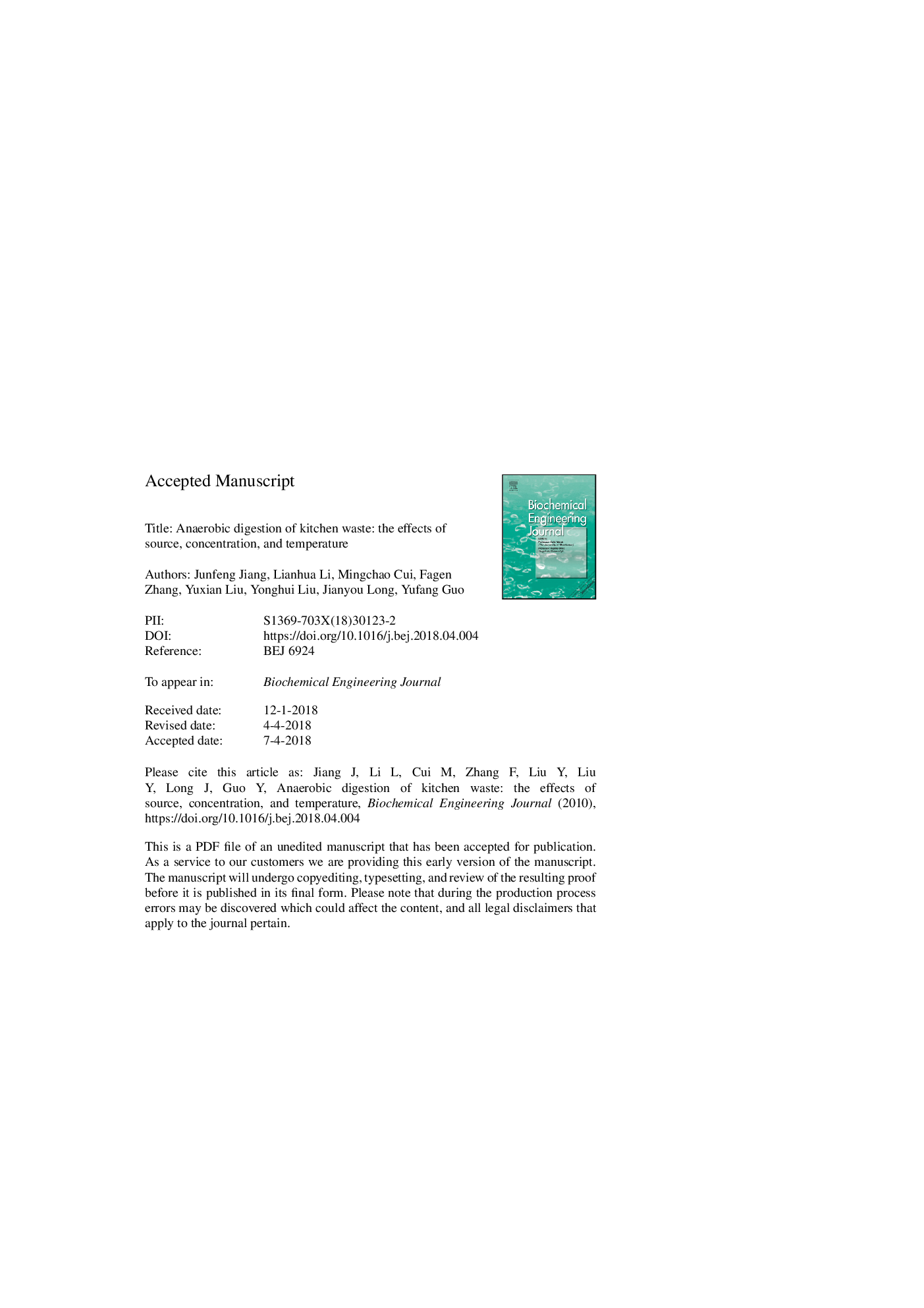| Article ID | Journal | Published Year | Pages | File Type |
|---|---|---|---|---|
| 6482195 | Biochemical Engineering Journal | 2018 | 31 Pages |
Abstract
The anaerobic digestion (AD) performance for breakfast, lunch, and dinner kitchen waste (KW) produced by the canteen at Guangzhou University was assessed by a batch experiment under mesophilic and thermophilic conditions. The AD concentrations were 9.54â¯g VS/L, 20.12â¯g VS/L, and 39.99â¯g VS/L, respectively. The concentration of 20.12â¯g VS/L under thermophilic conditions had the best AD performance among all the KW. The maximum specific methane yield of 591â¯Â±â¯30â¯mL/g VS was obtained from dinner KW (D-KW). Due to the differing organic composition, the specific methane yield of D-KW and lunch KW (L-KW) was 41.16% and 19.76% higher than that of breakfast KW (B-KW) under the optimal condition, respectively, whereas that of D-KW was 17.96% higher than that of L-KW. The specific methane yield was significantly correlated to the crude fat content. When the concentration was increased to 39.99â¯g VS/L, accumulation of toxic materials was observed and the AD process stopped. The potential biogas yield, based on production of 5904.43 tons of KW per year at the Guangzhou Higher Education Mega Center (HEMC), is 1.08 million m3 biogas, equivalent to 2.15 million KW h of electricity.
Related Topics
Physical Sciences and Engineering
Chemical Engineering
Bioengineering
Authors
Junfeng Jiang, Lianhua Li, Mingchao Cui, Fagen Zhang, Yuxian Liu, Yonghui Liu, Jianyou Long, Yufang Guo,
